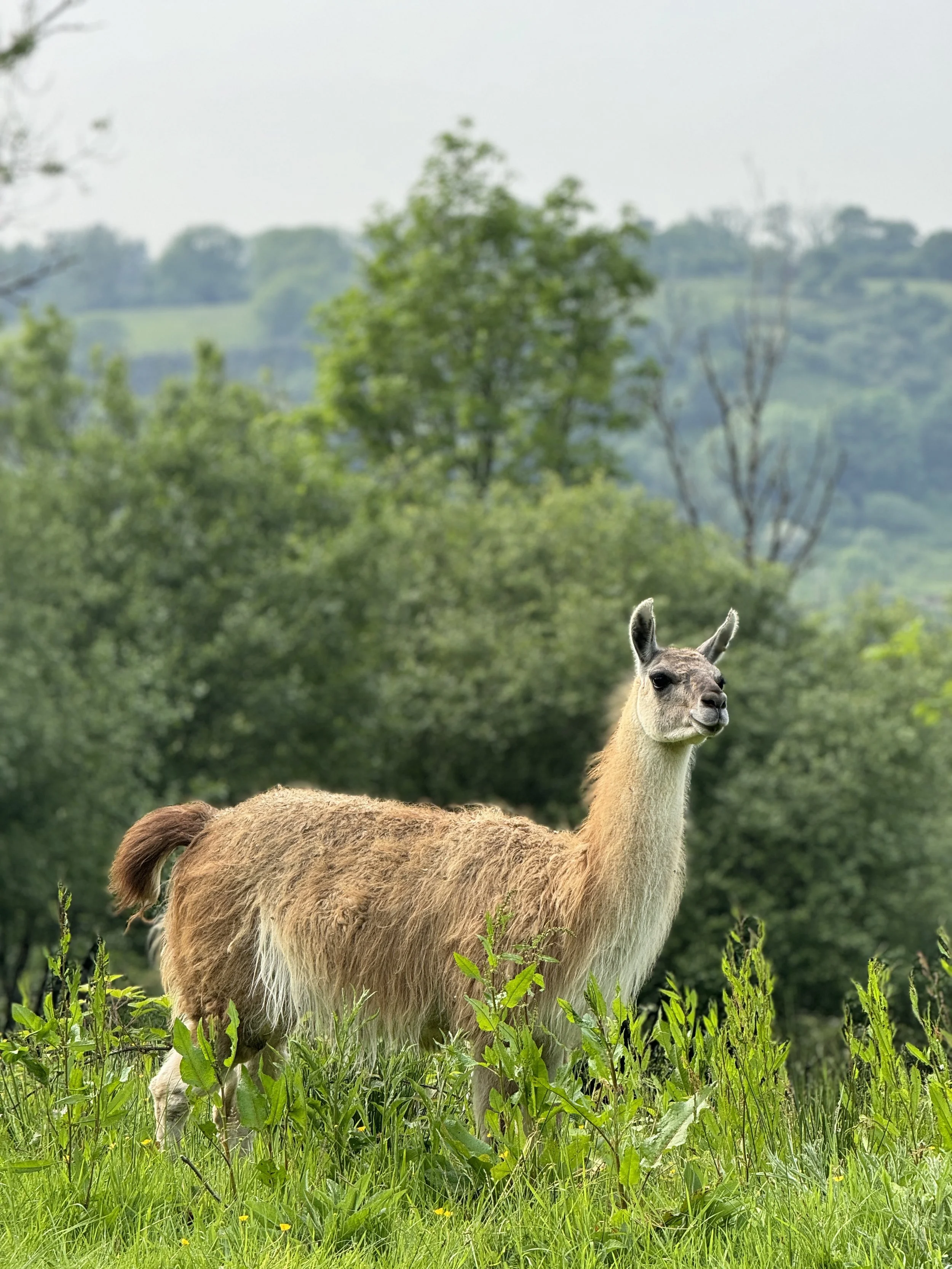
Do Llamas Spit?
Just like a dog may bite, a cat may scratch or a horse may kick, a llama MAY spit – but this is predominantly amongst themselves to maintain a pecking order and to maintain their own space.
All camelids are capable of spitting: llamas, guanacos, alpacas, vicuna, and camels. Some people claim that one type of camelid spits more than others (some commercially orientated alpaca owners claim that llamas spit more than alpacas) - but this is nonsense - all are equally capable and there is no meaningful difference between camelid species when it comes to spitting.
Spitting amongst llamas most often takes place when they are feeding, to protect their food from each other. Unsuspecting humans who venture between llamas when eating may inadvertently end up in the middle of a spit fight between llamas. Sometimes humans in these circumstances who have not taken the time to understand llama body language may think that that llama has spat at them, when the llama was actually targeting the llama behind (or next to) the human.
A llama is a prey animal, and llamas naturally see humans as predators. Therefore their natural reaction to being approached by a human is not to get into a fight with them, or spit at them, but to run as far away as possible so that they cannot be eaten.
They will only spit at a human if they have no other choice i.e. the human is not giving the llama enough room to run away and avoid conflict.
Humans planning on interacting with llamas must therefore ensure that they are aware of the space between them and any llamas in the vicinity, to respect a llama’s comfort level when being approached, and to not force their presence upon any llamas.
In rare instances a llama may spit at a human if it has been incorrectly reared (i.e. hand reared instead of left with their mother – in these scenarios the young llama grows up thinking that all humans are llamas, and therefore thinks it is okay to use normal llama specific behaviour such as spitting). Llamas can also spit if they are badly treated, or are put through situations that they find excessively stressful.
In summary it is an over hyped characteristic, mostly found in some zoo or farm park situations where camelids are all too commonly hand reared or over handled as youngsters. The media also of course loves to focus on this particular trait particular to camelids, and consequently it gets overblown and sensationalised. It is usually irrelevant to most peoples day-to-day experience of their llamas as long as they are paying attention to their llamas behaviour and body language.
